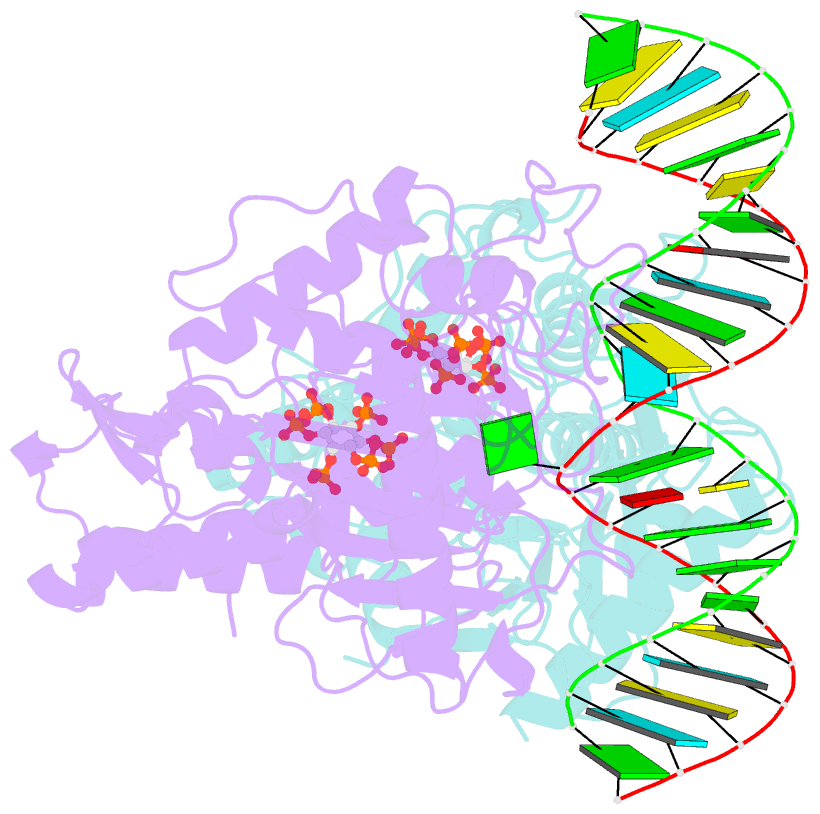Summary information and primary citation
- PDB-id
- 6d06; SNAP-derived features in text and JSON formats;
DNAproDB
- Class
- hydrolase-RNA
- Method
- X-ray (2.55 Å)
- Summary
- Human adar2d e488y mutant complexed with dsrna containing an abasic site opposite the edited base
- Reference
- Monteleone LR, Matthews MM, Palumbo CM, Thomas JM, Zheng Y, Chiang Y, Fisher AJ, Beal PA (2019): "A Bump-Hole Approach for Directed RNA Editing." Cell Chem Biol, 26, 269. doi: 10.1016/j.chembiol.2018.10.025.
- Abstract
- Molecules capable of directing changes to nucleic acid sequences are powerful tools for molecular biology and promising candidates for the therapeutic correction of disease-causing mutations. However, unwanted reactions at off-target sites complicate their use. Here we report selective combinations of mutant editing enzyme and directing oligonucleotide. Mutations in human ADAR2 (adenosine deaminase acting on RNA 2) that introduce aromatic amino acids at position 488 reduce background RNA editing. This residue is juxtaposed to the nucleobase that pairs with the editing site adenine, suggesting a steric clash for the bulky mutants. Replacing this nucleobase with a hydrogen atom removes the clash and restores editing activity. A crystal structure of the E488Y mutant bound to abasic site-containing RNA shows the accommodation of the tyrosine side chain. Finally, we demonstrate directed RNA editing in vitro and in human cells using mutant ADAR2 proteins and modified guide RNAs with reduced off-target activity.





